The nation’s favourite flower, so if its very identity is threatened by an alien invader, it’s a matter of great national import.
I realise now, with the great benefit hindsight brings, that my early gardening years were a time of great innocence. Innocence is perhaps the wrong word because what I probably mean is ignorance. We planted things in our gardens without a thought for the impact on the wider world. We sloshed chemicals about with a similar lack of concern, assured by the manufacturers that they were tested and safe and assured by the government agencies that did the testing that they were tested and safe.
Alien plants and the notion that they might not necessarily be benign, did not cross my radar as an issue until many years into my horticultural career. There were one or two obvious ones, Japanese knotweed especially, that were clearly undesirable. Rhododendron ponticum was alien but most people loved to see hillsides of purple flowers so it wasn’t widely regarded as bad and was enthusiastically bought and sold in nurseries everywhere.
Spanish bluebells are very much in the crosshairs now, along with a much wider range of alien plants that may only have demonstrated the capacity to move aggressively into the wild in a few areas but which are being flagged for their potential before they become a serious problem. There’s a familiar ring about that scenario; a stitch in time, as it were.
Spanish bluebells were introduced to gardens by the Victorians. They are different to our own but not significantly more ornamental. By current sensibilities they might be regarded as relatively coarse. Unsurprisingly, given their fecundity and the length of time they have been here, some have escaped. Sometimes they have escaped in the form of pollen, aided and abetted by bees, who care little about the nationality of their food, sometimes they have been dumped in wild places as garden rubbish tipped on roadside verges.
The charity Plantlife found the alien species or hybrids with it in one in six broadleaved woodlands in the UK. In my own garden I have what appears to be pretty much the full range from pure Spanish to pure English. STOP.
In my own garden I have what appears to be pretty much the full range from what I think of as pure Spanish to what I think of as pure English. That’s better, let’s consider that a bit.
In a front garden elsewhere in our village are masses of what I regard as typical Spanish bluebells. They are robust, broad leaved, mid blue, have flared bells arranged all round the spike which is upright to the tip. I didn’t smell them and I didn’t check the colour of the pollen, I took two quick pictures and shuffled self consciously on up the road. The question is, are they truly Spanish bluebells or are they hybrids?
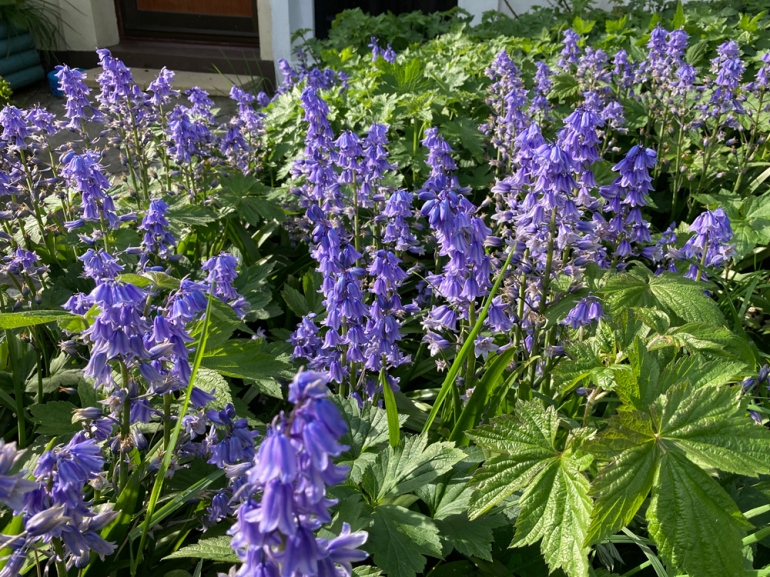
I have at least five books containing descriptions of Spanish bluebells but let’s go with quite an old one, on the basis that less hybridisation would have taken place longer ago. This description is from the Clapham, Tutin and Warburg Flora of the British Isles, Second Edition, 1962.
Endymion hispanicus (Mill) Chouard
Differs from E. nonscriptus as follows: Lvs broader, 10-35mm. Racemes erect, not unilateral. Pedicels ascending, not curving at fl. so that the fls are ± erect. Per. segs paler, ± spreading, so that the perianth is campanulate, tips not recurved, broader and somewhat shorter. Filaments all inserted about middle of perianth. Anthers blue. Fl. 5. Pollinated by insects. 2n=16.
My “typical” Spanish bluebells fit the description in some regards but not in others. The leaves are broader, the racemes are erect and not one sided. The perianth is campanulate and relatively short. However, the tips are recurved, the pedicels are not ascending and the flowers hang down rather than being ± erect. Another thing I didn’t check was where the anthers were attached.
Spanish bluebells are native to a wide area, Spain, Portugal, W. France, N. & C. Italy; N. Africa. It is likely that over such a large area there would be considerable variation. I wonder what the history of its introduction to gardens in this country has been. Sometimes things that are easily propagated get introduced only once or twice, then propagated in the country they’ve been introduced to. Sometimes year after year thousands of plants or bulbs are taken from the wild and exported to other countries. In the first instance the genetic base of an introduced species would be very narrow, in the latter very wide.

Yesterday Sue and I went for a bluebell study walk along some of the quieter lanes nearby. Just now they’re all pretty quiet but one vehicle in 90 minutes is quiet. I took a heap of pictures of bluebells, working on the assumption that they were almost certainly native English bluebells.
At the top of the section on bluebells, the Flora gives a simple key:
Raceme drooping at tip, per. segs ± parallel below; anthers cream. Common.
1. non-scriptus
Raceme erect: per. segs not parallel below; anthers blue. Rare introduction.
2. hispanicus
It seems reasonable to work on the basis that these are the most consistent differences one should see and on that basis all we saw were English bluebells. Which is a far cry from saying that what we saw were uniform. Some wildflowers are very uniform, Primroses for example are all pretty much the same and a pink flowered plant has almost certainly picked up pollen from a garden plant. Bluebells, when you start to look closely, are not like that. There is quite a range out there. Some of the variation is phenotypical. Plants growing in poor thin soil were much smaller with far fewer flowers in the raceme. Plants growing in the open, or on the south facing verge of the lane, were mostly deeper coloured.
That said, even growing in apparently identical conditions (you never know what’s going on underground) there was a lot of variation. Here are some of the ones I photographed.
All have ± parallel perianth segments. That is to say the tube section is a cylinder not a bell shape. If anything they narrow towards the tip. I didn’t check the colour of the anthers in the field but looking through my photos I can see them in around half and in every case they are cream to white. Upright spikes are not the norm but are not uncommon either and the one sidedness of the spikes is not always clear cut. In a couple of miles of verges we saw perhaps six or seven white or pink plants, almost always isolated individuals though in the case of the pinks, scattered along perhaps 20 yards of verge. The pinks had far fewer flowers in the racemes than either the whites or blues growing around them.
We didn’t see many clumps of identical flowers, looking like they’d grown by vegetative division of a single bulb. The impression was of a population mostly derived from seed.

Once back home, having exceeded our exercise allowance, we had a cup of tea. Then I repeated the exercise around the garden. Here is a big sample of what I found.
At a glance you see some that are very obviously either Spanish or hybrid. The short bell shaped flowers are an instant giveaway. Wild bluebells seem never to widen out towards the end of the flower, so even the ones that taper only slightly are almost certainly hybrid. The various other characteristics that are often given as identifiers for Spanish or hybrid bluebells seem, on the basis of this sample, to be almost useless. Colour is no help at all. There are obviously campanulate flowers on pendulous racemes and cylindrical flowers in upright racemes. Almost none of the flowers face outward or upwards. Blue anthers or pollen are never obvious, a hint of blue is as much as I have seen. The petal tips can be strongly reflexed even on campanulate flowers. You can have a pendulous raceme of parallel sided flowers with reflexed tips and cream pollen, i.e. it conforms to every requirement to be an English bluebell, yet it still looks wrong, I think because the tube is too short for its width and it looks squat.
A recent BBC news item reports on a study that suggests that the higher fertility of English bluebells gives them an advantage over the non-native species and that the risk of contamination is perhaps exagerated.
Based on my own sample I would suspect that the majority of my self sown plants are hybrids, even if most of them are closer to the English than the Spanish in most characteristics. I have cleared patches of them successfully; it has to be done when they are in leaf so that every plant, no matter how small, can be picked out. Once dormant, very many small bulbs will be missed if an attempt to remove them is made. If I were wanting to try to get back to pure English bluebells I think I would get rid of all that I have and start afresh. It is likely that would take years.
An alternative approach would be to rogue out all the most obviously non-native plants each year and let the most English looking plants seed while dead heading any in betweeners. They may already have been pollinated by Spanish types and produce hybrid type seedlings. In the garden it seems that a single bulb can divide and build up a substantial clump, producing a cluster of identical flower spikes, so lifting, dividing and spreading about the most desirable forms might be a good option.
For myself, I have very good forms of English types, Spanish types and hybrid types and in total too many. I will continue to dead head as thoroughly as possible, clear some areas of all forms, propagate the good ones and worry about whether I should get rid of the aliens at some point in the future. For now I have more important things to worry about.
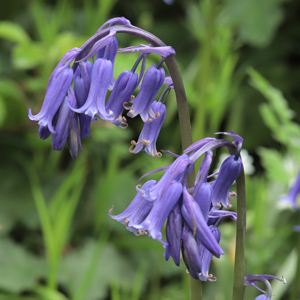

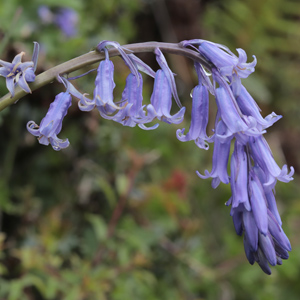


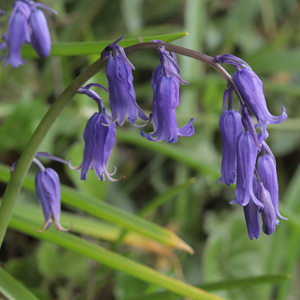

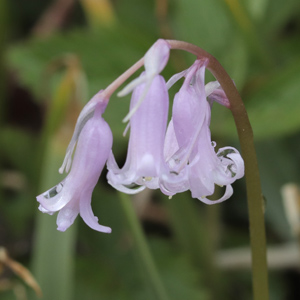
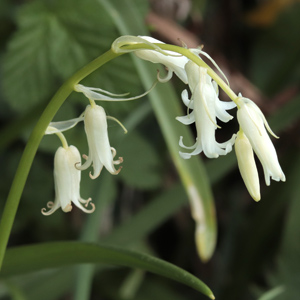

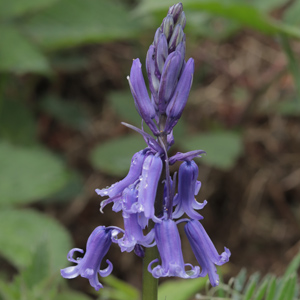






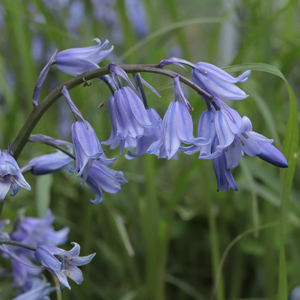


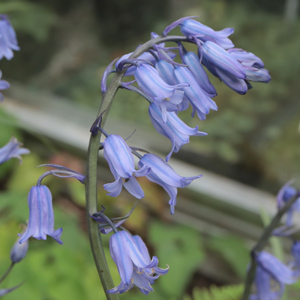


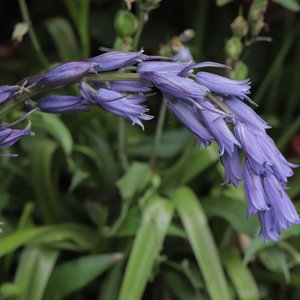

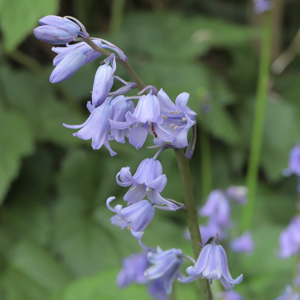
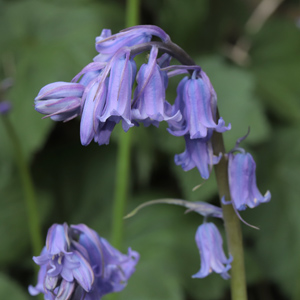
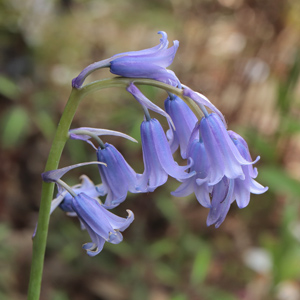


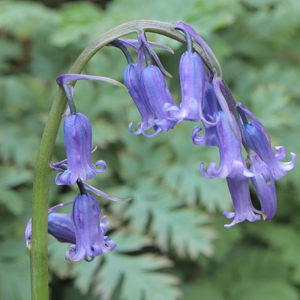

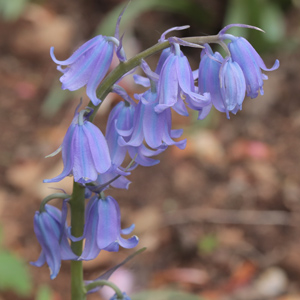
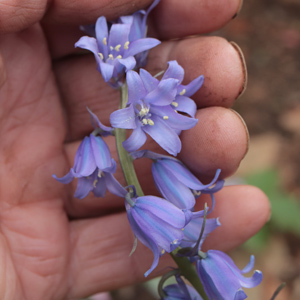



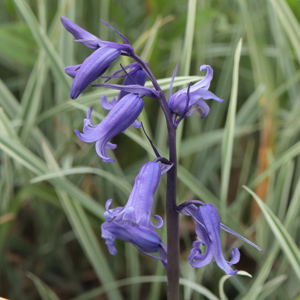



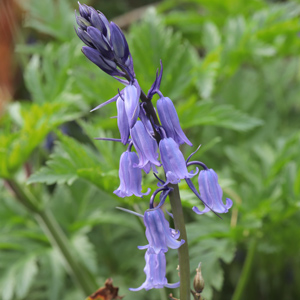

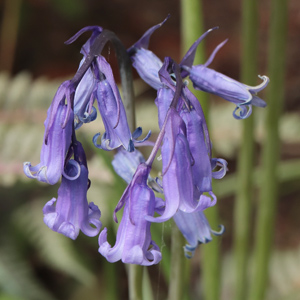
Back when the biggest giant redwood were cut down merely for bragging rights, people though that their forests were inexhaustible resources. There was no concern for ecology when exotic species were introduced, just because no one realized what an impact such species would have on the ecosystem once naturalized. What is baffling now is that it continues! People sell seed from all over the world just on EBay, with no regard for what such seed can do where it arrives.
LikeLike
Considering how many thousands of plants have been introduced here over several centuries it’s pretty amazing that the number of serious nuisance species can be counted on your fingers.
LikeLiked by 1 person
There are more than that here. There are more than that right outside. Some of the natives are getting scarce, including the California poppy, which is the State Flower. It does well in the deserts, only because the exotic species there are not as aggressive.
LikeLike
It’s a similar story in New Zealand and to an extent Australia. Alien species from warmer climates than ours will struggle against the plants established here and adapted to our conditions. In the other direction our dandelions and bluebells can’t believe their luck.
LikeLiked by 1 person
Actually, New Zealand and Australia have problems with with several of our species that have naturalize there, just like we have problems with several of their species naturalized here. Yuccas should not have naturalized in Australia without their respective pollinators, but a few species have somehow figured out how to do so. (Each species of Yucca is pollinated exclusively by a specific species of Yucca moth.)
LikeLike
I probably saw naturalized American species in Australia and New Zealand and didn’t realise they weren’t native. I would have known Yucca wasn’t.
LikeLiked by 1 person
Monterey pine and Monterey cypress are as common in regions of both as blue gum is here.
LikeLiked by 1 person
A pretty good summary Jim. I have ‘taught’ David to notice the Spanish and Hybribs. Sadly there are only very few English ones on our way down to the levels. You have reminded me that I must get those that escaped the digging last autumn. I let them flower..but now they have had their moment, it is the chop. I just hope the bees have not contaminated the lovely English ones if there are any nearby.
LikeLike
I have some patches I want to clear , if I get to them before they die down, and I must tag a couple of very good ones for splitting and spreading around. I saw a clump of Spanish bluebells in a nearby lane, dumped garden rubbish probably, I wonder if its illegal to dig them up?
LikeLike
A very comprehensive post Jim. I have just been for a walk around Trencrom Hill to photograph the bluebells. All natives from what I have seen but some look blue and others more violet – blue. And from a distance often purple. These are mainly in the open on the western side, but also among the brambles and bracken, less on the eastern side oddly as that borders the woodland. There are some patches in the wood and some in the lanes, growing on top of Cornish hedges in places. Strangely I could not discern any scent.
LikeLike
I get the distinct impression that much of the information online is rehashed from books, not based on observation. The same old chestnuts get repeated time and again. They are certainly not confined to woodland in Cornwall, they are just as happy, perhaps happier, in the open, even if in competition with masses of other vegetation. I just went round the garden sniffing the flowers; I couldn’t detect much and the best was clearly a hybrid. I will try again on a calmer and warmer day. It’s always rewarding to really look carefully at the common things we take for granted.
LikeLiked by 1 person